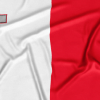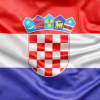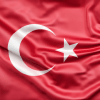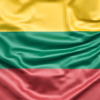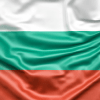University of Sarajevo

The University of Sarajevo is a public university located in Sarajevo, Bosnia and Herzegovina. It is the largest and oldest university in the country, tracing its initial origins to 1537 as an Islamic madrasa. With 22 faculties, 3 Academies, and 3 faculties of Theology and with more than 32,000 enrolled students, it ranks among the largest universities in the Balkans in terms of enrollment. Since opening its doors in 1949, a total of 122,000 students received Bachelor’s degrees, 5,000 received Master’s degrees and 2,500 received Doctorate degrees in 45 different fields. It is now widely regarded as the most prestigious university in Bosnia and Herzegovina and employs more than one thousand faculty members.
The University of Sarajevo today is a large and complex public institution, comprising 30 organizational units: 22 Faculties, 3 Academies, and 5 research institutes, in six areas of academic work: Social Science, Humanities, Medicine, Technical Studies, Science, Biotechnology, and Art. Associate members of the University include the National and University Library of BiH, Gazi Husrev-bey’s Library, and the National Museum, as well as other units. Understanding the importance of positioning itself within the European Higher Education Area (EHEA), the University of Sarajevo entered the complex process of reform in compliance with the Bologna principles in the 2005/2006 academic year.
The University of Sarajevo provides students with an opportunity to use resources from Gazi Husrev-bey’s Library. The Gazi Husrev-Bey Library currently holds about one hundred thousand library units (manuscripts, printed books, journals, and various documents) in Arabic, Turkish, Persian, Bosnian, and several other European languages. More than 10,500 library units are manuscript codices with about 20,000 major and minor works from Islamic sciences, Oriental languages, Fiction, Philosophy, Logic, History, Medicine, Veterinary Science, Mathematics, Astronomy, and other sciences.
| Faculty | Level of Education | Medium of Instruction | Term of Study |
|---|---|---|---|
| Faculty of Administration | UndergraduatePostgraduate | Bosnian/English | B.D. – 4 years M.D. – 1,5-2 years Ph.D. – 3 years |
| Faculty of Criminalistics, Criminology and Security Studies | Undergraduate | Bosnian/English | B.D. – 3 years |
| Faculty of Economics and Business | UndergraduatePostgraduate | Bosnian/English | B.D. – 3 years M.D. – 1,5-2 years |
| Faculty of Law | UndergraduatePostgraduate | Bosnian/English | B.D. – 4 years M.D. – 1,5-2 years |
| Faculty of Political Sciences | UndergraduatePostgraduate | Bosnian/English | B.D. – 3 years M.D. – 1,5-2 years |
| Faculty of Sports and Physical Education | UndergraduatePostgraduate | Bosnian/English | B.D. – 3 years M.D. – 1,5-2 years |
| Faculty of Catholic Theology | UndergraduatePostgraduate | Bosnian/English | B.D. – 3 years M.D. – 1 year |
| Faculty of Islamic Sciences | UndergraduatePostgraduate | Bosnian/English | B.D. – 3 years M.D. – 1 year |
| Faculty of Pedagogy | UndergraduatePostgraduate | Bosnian/English | B.D. – 3 years Master – 1,5-2 years |
| Faculty of Philosophy | UndergraduatePostgraduate | Bosnian/English | B.D. – 3 years M.D. – 1,5-2 years |
| Institute of History | UndergraduatePostgraduate | Bosnian/English | B.D. – 3 years M.D. – 1,5-2 years |
| Language Institute | UndergraduatePostgraduate | Bosnian/English | B.D. – 3 years M.D. – 1,5-2 years |
| Oriental Institute | UndergraduatePostgraduate | Bosnian/English | B.D. – 3 years M.D. – 1,5-2 years |
| Faculty of Dentistry | UndergraduatePostgraduate | Bosnian/English | B.D. – 3 years M.D. – 1,5-2 years |
| Faculty of Health Studies | UndergraduatePostgraduate | Bosnian/English | B.D. – 4 years M.D. – 1,5-2 years |
| Faculty of Medicine | Postgraduate | Bosnian/English | M.D. – 6 years |
| Faculty of Pharmacy | Postgraduate | Bosnian/English | M.D. – 5 years |
| Faculty of Veterinary Medicine | UndergraduatePostgraduate | Bosnian/English | B.D. – 4 years |
| Faculty of Agriculture and Food Science | UndergraduatePostgraduate | Bosnian/English | B.D. – 3 years M.D. – 1,5-2 years |
| Faculty of Forestry | UndergraduatePostgraduate | Bosnian/English | B.D. – 3 years M.D. – 1,5-2 years |
| Faculty of Science | UndergraduatePostgraduate | Bosnian/English | B.D. – 3 years M.D. – 1,5-2 years |
| Faculty of Architecture | UndergraduatePostgraduate | Bosnian/English | B.D. – 3 years M.D. – 1,5-2 years |
| Faculty of Civil Engineering | UndergraduatePostgraduate | Bosnian/English | B.D. – 3 years M.D. – 1,5-2 years |
| Faculty of Mechanical Engineering | UndergraduatePostgraduate | Bosnian/English | B.D. – 3 years M.D. – 1,5-2 years |
| Faculty of Transport and Communications | UndergraduatePostgraduate | Bosnian/English | B.D. – 3 years M.D. – 1,5-2 years |

List of Educational Programs:
- Agriculture and Food Science;
- Architecture;
- Biology;
- Business Studies, Economics, Marketing and Management;
- Catholic Studies;
- Chemistry;
- Civil Engineering;
- Criminology;
- Dentistry;
- Education, Teacher Training;
- Electrical Engineering, Telecommunications;
- Fine Arts & Design;
- Forestry;
- Geography;
- History;
- Human Rights;
- European Studies;
- Gender Studies;
- Islamic Studies;
- Journalism, Public Relations, Communication;
- Languages;
- Law;
- Mathematics;
- Mechanical Engineering;
- Medicine;
- Music & Musicology;
- Performing Arts;
- Pharmacy;
- Philosophy;
- Physics;
- Political Science;
- Psychology;
- Public Administration;
- Public Health;
- Security and Peace Studies;
- Social Work;
- Sports;
- Transport;
- Veterinary.
Accommodation
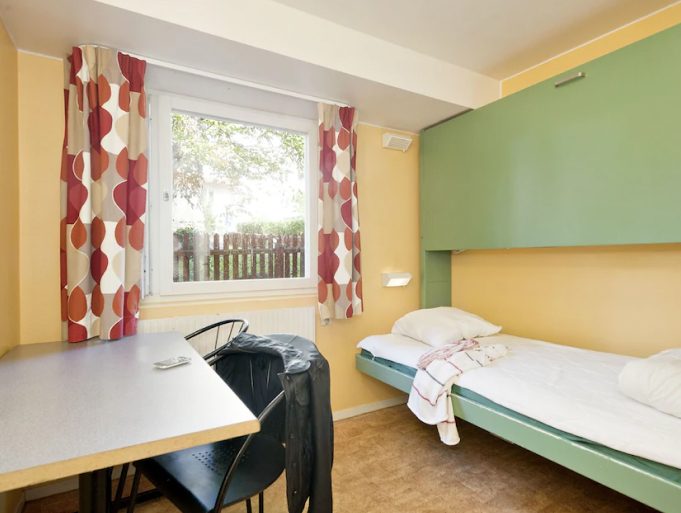
The University of Sarajevo provides students with the opportunity to live in Nedžarići Student Dormitory or Bjelave Student Dormitory. The Nedžarići Student Dormitory is located in Novi Grad Municipality with an accommodation capacity of 960 places. The Nedžarići Student Dormitory possesses a student restaurant, cafe-pizzeria, park, multimedia center and library, reading room, football and basketball court, two tennis courts, a table tennis facility, and copying facilities. As part of its activities, SD Nedžarići organizes numerous cultural and sporting events for its tenants, as well as numerous courses and lectures in various fields.
The Bjelave Student Dormitory is located in Centar Municipality. It consists of 9 Dormitory buildings with an accommodation capacity of about 1,000 students. The dormitory has a restaurant, coffee buffet, park, program room, multimedia center, and library, outdoor amphitheater, and a football and basketball court. As part of its contents, The Bjelave Student Dormitory organizes numerous cultural and sporting events as well as numerous courses and lectures in various fields.
About the City of Sarajevo

Nestled within the embrace of the Dinaric Alps, Sarajevo, the capital city of Bosnia and Herzegovina, emerges as a vibrant testament to the resilience, diversity, and indomitable spirit of its people. A city that has risen from the ashes of conflict, Sarajevo seamlessly weaves together its historical heritage with the rhythm of modern life. Sarajevo holds within its embrace a vibrant student culture that pulsates with the rhythm of history, diversity and a thirst for knowledge. As students traverse the city’s streets, they weave together the threads of tradition and modernity, creating an educational tapestry that reflects both the challenges of the past and the promises of the future.
Sarajevo has embraced modernity with open arms. Its sleek trams glide through the streets, connecting neighborhoods while transporting the city’s bustling energy. The city’s identity is a mosaic of cultures and faiths. Its streets reverberate with the call to prayer from mosques, the ringing of church bells, and the echoes of synagogue chants. This rich interplay of diverse backgrounds is mirrored in the student population. In the classrooms and corridors of Sarajevo’s universities, students from various ethnicities, religions, and backgrounds converge, fostering an environment of cross-cultural understanding and harmony.
Sarajevo is a city that radiates warmth. Its people, known for their hospitality, warmly welcome visitors into their homes and hearts. The city’s history has tested its limits, but its resilience has prevailed, serving as a testament to the power of unity, determination, and the enduring spirit of Sarajevo. The heartbeat of Sarajevo can be felt in its cafes. These cozy retreats are where friends gather, stories are shared, and dreams are nurtured over steaming cups of Bosnian coffee. The culinary scene is a delicious blend of Ottoman, Austro-Hungarian, and Balkan influences. Sarajevo’s cevapi, a dish of grilled minced meat served with some bread, has become an emblem of the city’s culinary prowess.
Sarajevo has got numerous sightseeing which are worth seeing. Here an examples of them:
- BaÅ¡ÄarÅ¡ija;
- Sebilj Fountain;
- Latin Bridge;
- Sarajevo City Hall;
- Yellow Fortress;
- Tunnel of Hope;
- Avaz Twist Tower;
- Gavrilo Princip Museum;
- Skenderija Bridge.
Sarajevo has embraced modernity with open arms. Its sleek trams glide through the streets, connecting neighborhoods while transporting the city’s bustling energy. Contemporary skyscrapers complement historical architecture, creating a skyline that’s a mix of tradition and innovation. Museums, libraries, and sports facilities showcase Sarajevo’s dedication to creating a holistic modern urban experience. In Sarajevo’s streets, where history and modernity meet, where cultures and faiths converge, students continue to script stories of resilience, hope, and progress.






